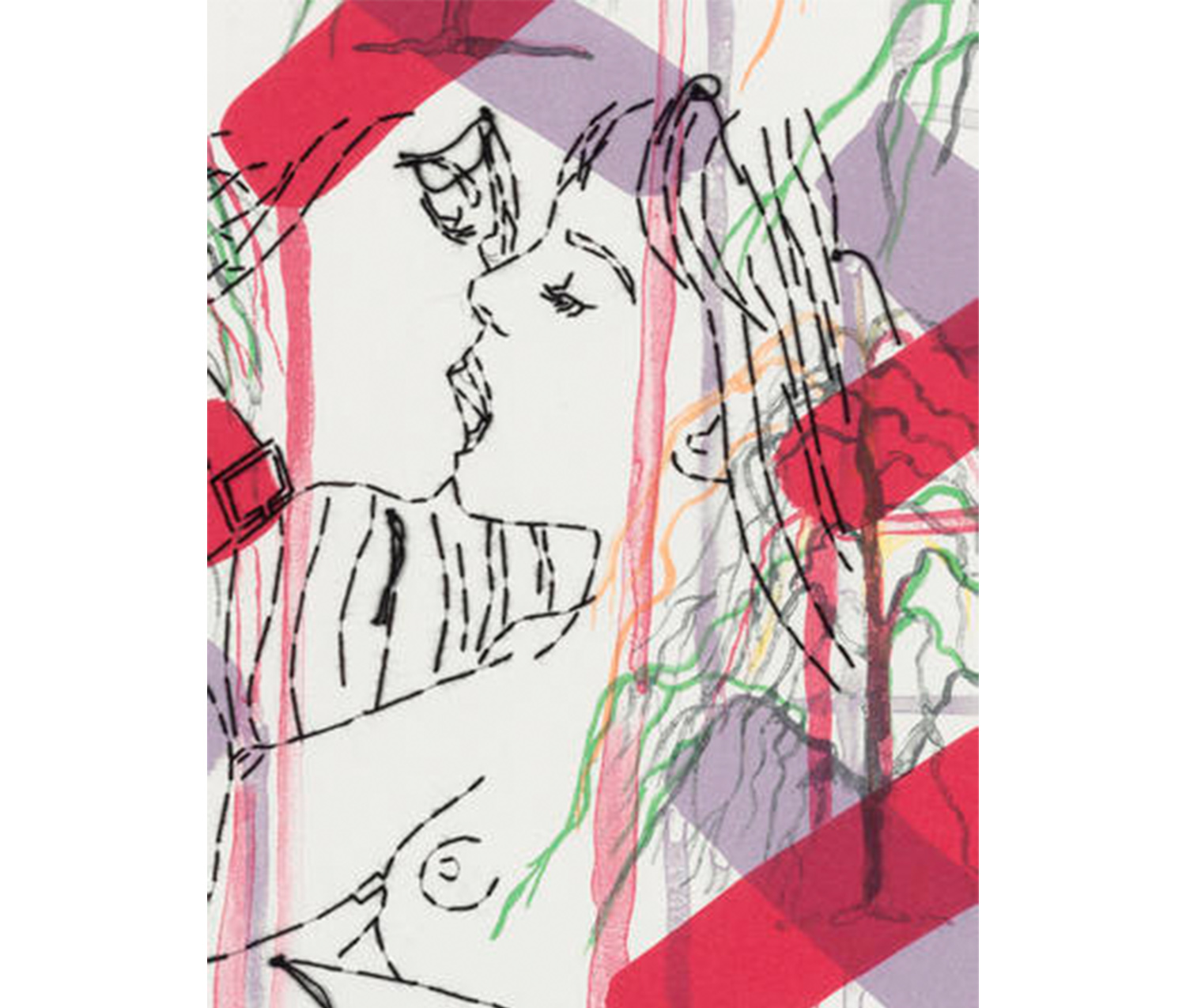
Kiss Cross
Taylor Fallon is a Smith College student, class of 2016, with a government major and an art history minor. She wrote this post for Islamic Art and Architecture, a course which surveys the architecture, landscape, book arts and luxury objects produced in Islamic contexts from Spain to India, and from the seventh through the twentieth centuries. The Fall 2014 session was taught by Professor Alex Dika Seggerman, the Five College Post-Doc in Islamic Art & Architecture.
Ghada Amer and Reza Farkhondeh, artists of the Middle Eastern diaspora, create collaborative works that highlight the female figure through use of embroidery, paint and stenciling. While not works of Islamic art, Amer and Farkhondeh’s creations reference several facets of the Islamic tradition through their use of stylized figures, a collaborative process, and detailed interpretation of female body.
In Kiss Cross, the watercolor background of linear motifs with abstracted trees and the intricate embroidery of two figures are carefully layered to evince the individual skill of each artist. While Amer and Farkhondeh work in tandem, each artist is responsible for one medium in their separate locales. This collaboration, creating a whole that is greater than the sum of its parts, reflects the workshop style of Persianate painting, again referring to aspects of traditional Islamic art with a modern twist.

Detail of Kiss Cross
While there are two artists, in Kiss Cross Amer’s work takes precedence and, unlike in the art of Persianate Painting, the artist’s hand is intentionally and extremely visible. Her striking depiction of the female body highlights themes of objectification, sexuality and empowerment. “I liked the idea of representing women through the medium of thread because it is so identified with femininity,” Amer said. “I wanted to ‘paint’ a woman with embroidery, too.”
In depicting the two bodies, sourced from erotic magazines, Amer does not stay within the perfectionist confines of tradition embroidery but rather uses a loose running stitch, leaving a tangle of lines and hanging threads to better engage the viewer. This sketch-like embroidery paired with Farkhondeh’s cage-like pattern serve to highlight the women’s faces, one of the few portions of the print left bare from color. This emphasis on the faces both serves to humanize rather than objectify the women and draws attention to their intimacy.